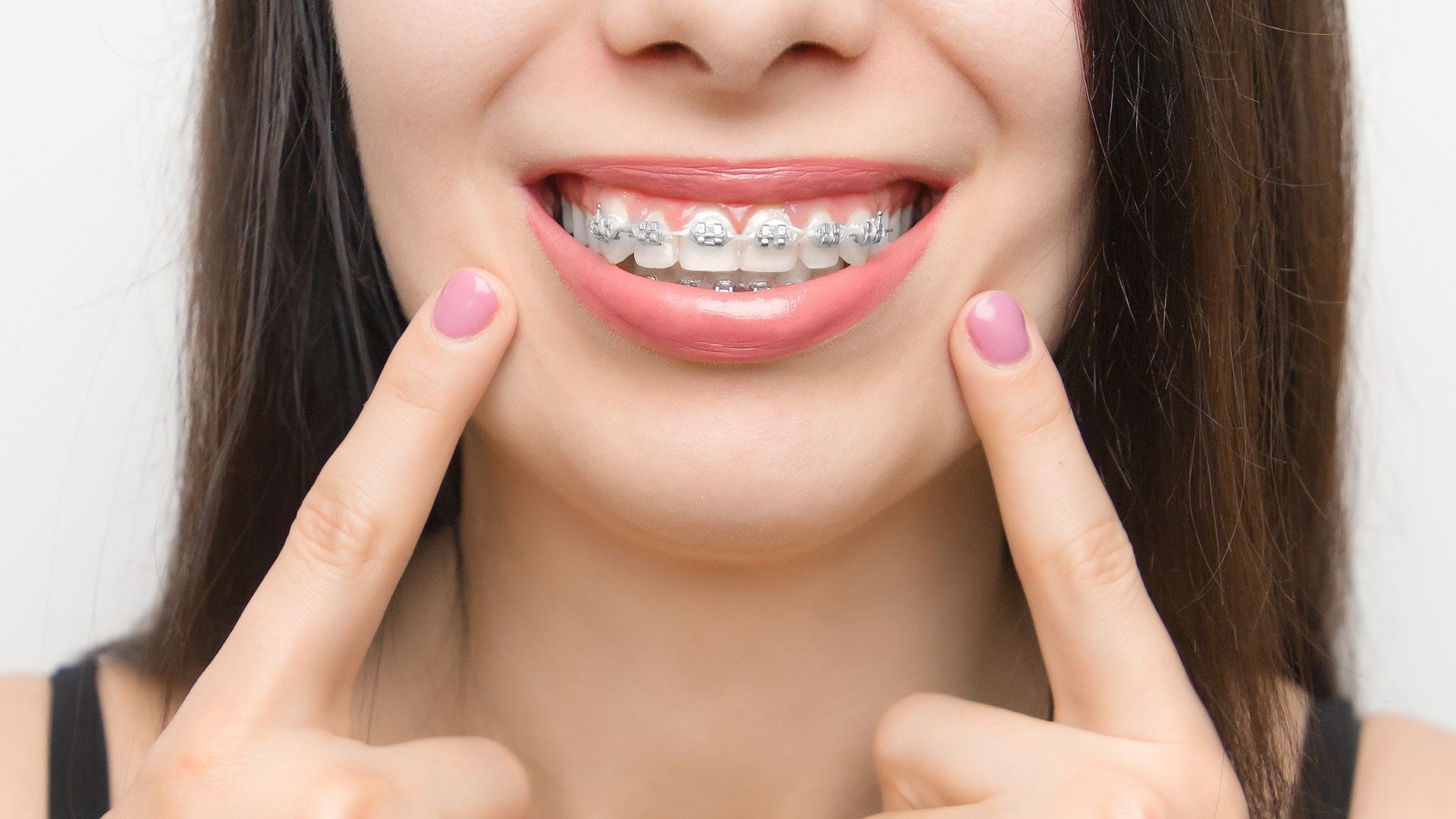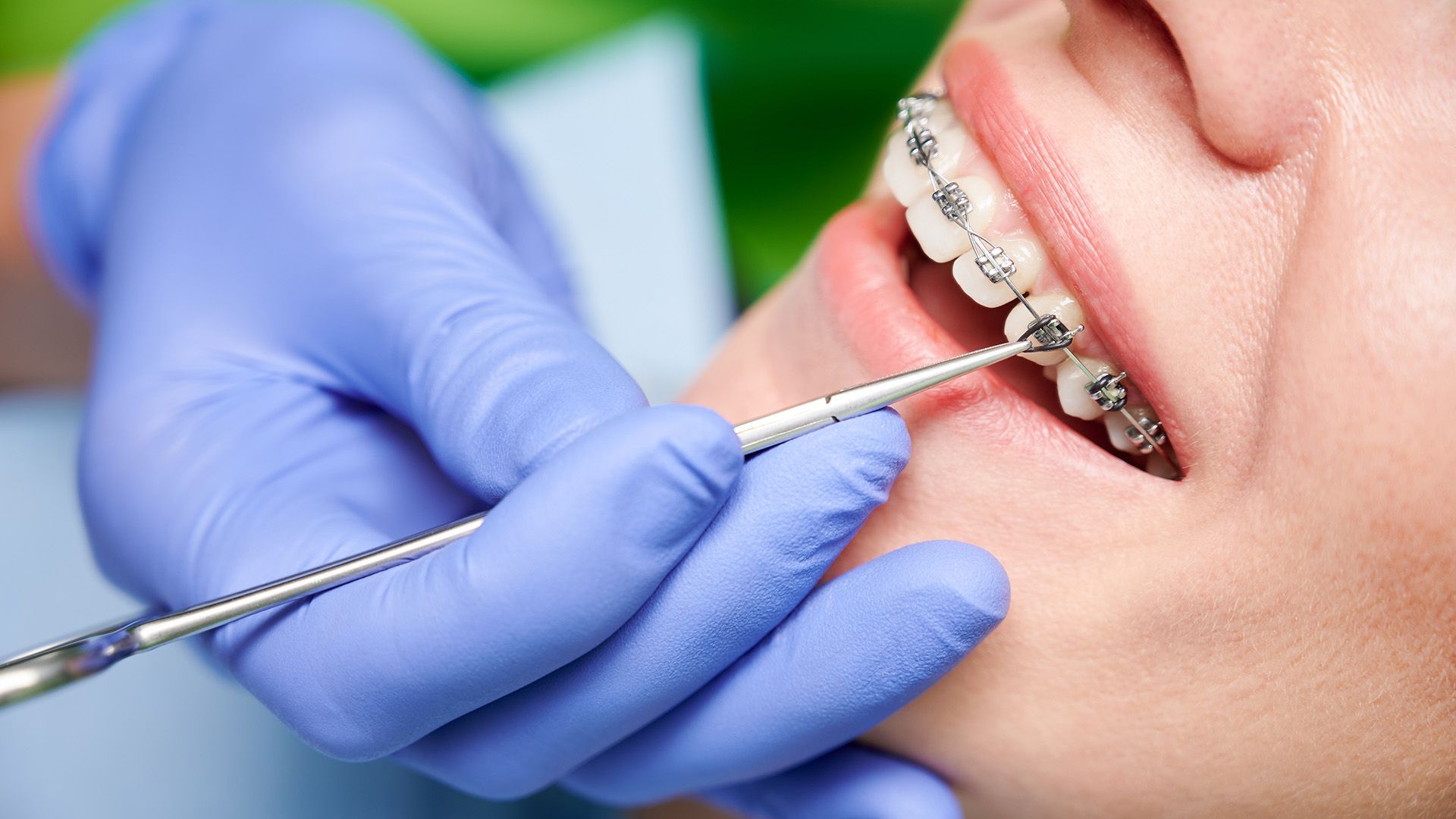Can Braces Fix TMJ?
Temporomandibular Joint (TMJ) disorders can cause considerable discomfort and affect everyday life. A common inquiry is: can braces fix TMJ issues? While braces primarily correct misaligned teeth and jaws, they can also assist in managing TMJ disorders. By realigning the bite and jaw position, braces might reduce strain on the TMJ, potentially alleviating associated symptoms. This article explores TMJ disorders, their symptoms, causes, and how TMJ and orthodontic treatment intersect. Additionally, we will review other potential treatment options for TMJ sufferers to provide a comprehensive understanding of this condition.

Understanding TMJ Disorders
The temporomandibular joint (TMJ) is a vital hinge connecting the jawbone to the skull, allowing smooth movement for talking, chewing, and facial expressions. Disorders of this joint, known as temporomandibular disorders (TMD), can lead to a range of uncomfortable symptoms and complications.
There are several types of TMJ disorders, including myofascial pain, disc displacement, and degenerative joint diseases. Myofascial pain involves discomfort in the muscles controlling jaw movement, while disc displacement occurs when the cartilage disc cushioning the joint shifts out of its normal position. Degenerative joint diseases, such as arthritis, can also affect the TMJ, causing inflammation and pain.
TMJ disorders can significantly impact jaw function, leading to movement limitations and discomfort during daily activities. Common symptoms include jaw pain, clicking or popping sounds when moving the jaw, and headaches. These symptoms can interfere with eating and speaking, making it essential to seek appropriate treatment. Understanding the connection between TMJ and orthodontic treatment is crucial for those seeking relief from TMJ-related discomfort.
The Symptoms of TMJ Disorders
Recognizing TMJ disorders involves identifying various symptoms. Patients often report jaw pain accompanied by headaches, earaches, or facial pain. Other common indicators include clicking or popping sounds when moving the jaw, difficulty fully opening or closing the mouth, and swelling around the jaw area.
Identifying TMJ-related pain can be challenging as it often mimics other conditions. Discomfort may radiate from the jaw to the neck or shoulders. It’s crucial to note the pain pattern—if it worsens with activities like chewing or jaw clenching, it might indicate TMJ issues. Persistent ache or stiffness, particularly after waking up, may suggest teeth grinding during sleep, a common TMJ disorder symptom.
These symptoms can significantly impact daily life. Chronic pain and discomfort can hinder routine tasks, from eating to speaking. Many individuals find that the nagging pain affects concentration and mood, leading to increased stress and frustration. Addressing TMJ disorders promptly is crucial. If you're experiencing these symptoms, consulting with a specialist can provide tailored solutions, including orthodontic treatments to help alleviate your discomfort.
What Causes TMJ Disorders?
TMJ disorders can arise from various factors, making diagnosis and treatment complex. One significant cause is dental misalignment, where teeth do not fit together properly. This misalignment creates an uneven force distribution during biting and chewing, straining the jaw muscles and joints. Can braces fix TMJ issues related to misalignment? Orthodontic treatments, such as braces, can help realign teeth and alleviate TMJ disorder symptoms.
Other contributing factors include stress and injury. Stress can lead to teeth grinding (bruxism) or jaw clenching, exacerbating TMJ pain and discomfort. Additionally, jaw or head injuries can disrupt TMJ function, causing inflammation and pain. Considering these factors is essential when evaluating TMJ issues as they significantly impact treatment outcomes.
Understanding TMJ disorder causes is crucial for effective management. If you suspect your TMJ pain is related to misalignment or other dental issues, consulting an orthodontic professional can provide tailored treatment options, including braces. Exploring TMJ and orthodontic treatment options can be a pathway to achieving a healthier, more comfortable smile.
The Role of Braces in TMJ Treatment
Braces play a significant role in treating TMJ disorders by realigning teeth and jaws. Misalignment can lead to uneven pressure on the jaw joint, causing pain and discomfort. Orthodontists use braces to gradually shift teeth into their proper positions, ensuring a balanced bite and reducing strain on the TMJ.
One primary benefit of orthodontic treatment for TMJ is improved jaw function. Correctly aligned teeth alleviate pressure on the joints and surrounding muscles, reducing symptoms such as jaw pain, headaches, and clicking sounds. Proper alignment also enhances overall oral health, making hygiene maintenance easier and reducing future dental issues.
Numerous case studies and patient testimonials highlight the effectiveness of braces in managing TMJ symptoms. For instance, one patient reported significant relief from chronic jaw pain after completing orthodontic treatment, enjoying meals without discomfort. Another patient experienced reduced headaches and improved sleep quality following teeth alignment. These positive outcomes underscore braces' potential not just for cosmetic enhancement but as a functional solution for TMJ disorders.
The question often arises, can braces fix TMJ completely? While they offer significant benefits, it's essential to understand that braces are part of a broader treatment plan addressing TMJ issues comprehensively.
Other Treatment Options for TMJ Disorders
While braces can address some underlying issues related to TMJ disorders, they are not the only solution. Various non-orthodontic treatments can help alleviate TMJ symptoms, including physical therapy, stress management techniques, and oral appliances. Physical therapy strengthens jaw muscles and improves flexibility, while stress management techniques, such as mindfulness and relaxation exercises, reduce tension contributing to TMJ discomfort. Oral appliances, like splints or night guards, provide relief by keeping the jaw in a more stable position during sleep.
Developing a comprehensive treatment plan tailored to your needs is essential. This may involve a combination of orthodontic and non-orthodontic therapies to manage TMJ symptoms effectively. Collaborating with healthcare professionals, including orthodontists, dentists, and physical therapists, ensures all aspects of your condition are addressed, leading to more effective outcomes.
Considering alternative therapies may be beneficial if traditional treatments do not provide sufficient relief. Options such as acupuncture, chiropractic care, or
cognitive-behavioral therapy can complement your primary treatment plan. Before pursuing alternative therapies, consult your healthcare provider to ensure they align with your overall treatment strategy and do not interfere with other ongoing therapies.













